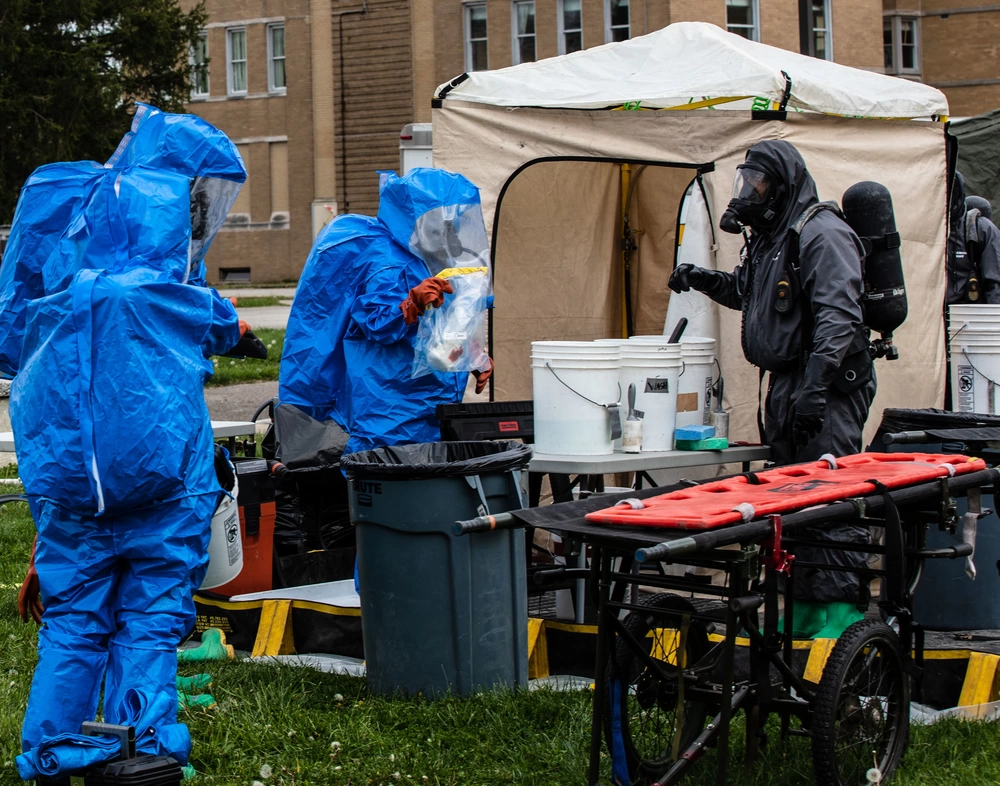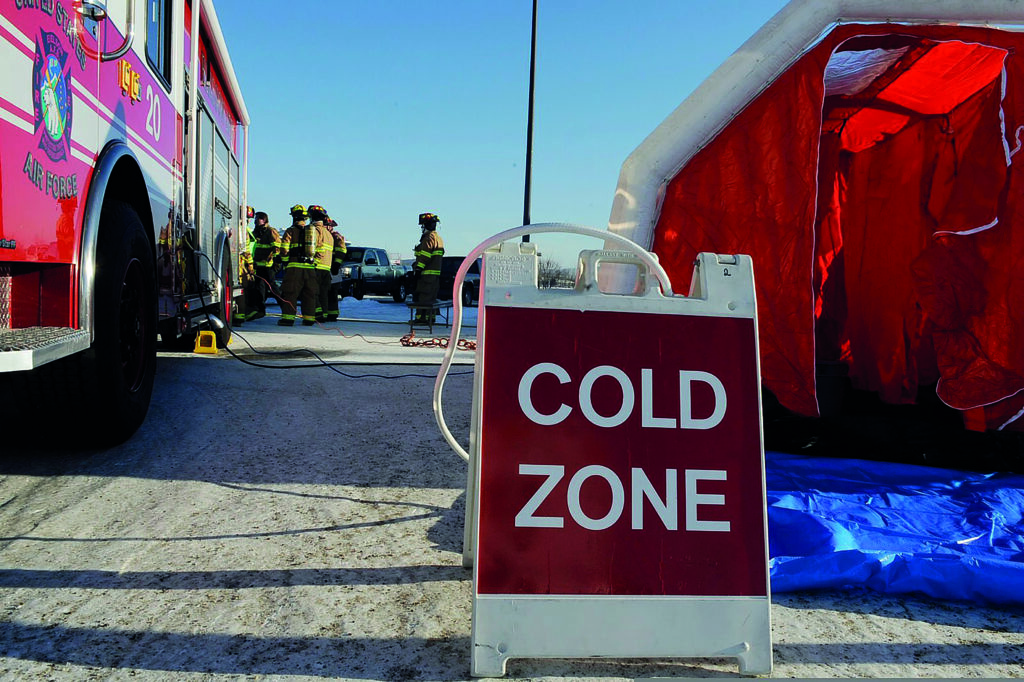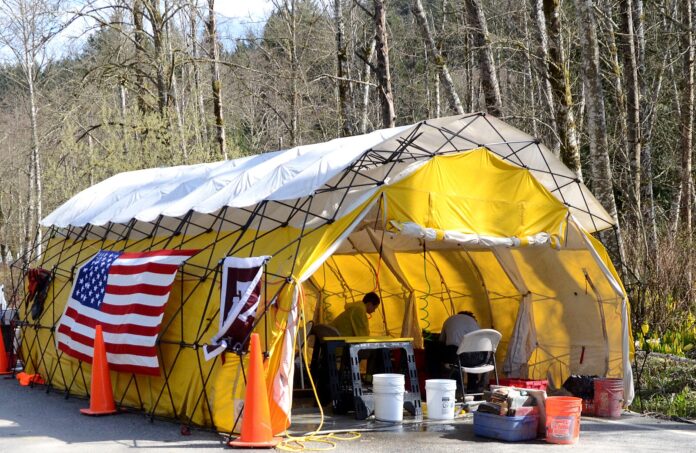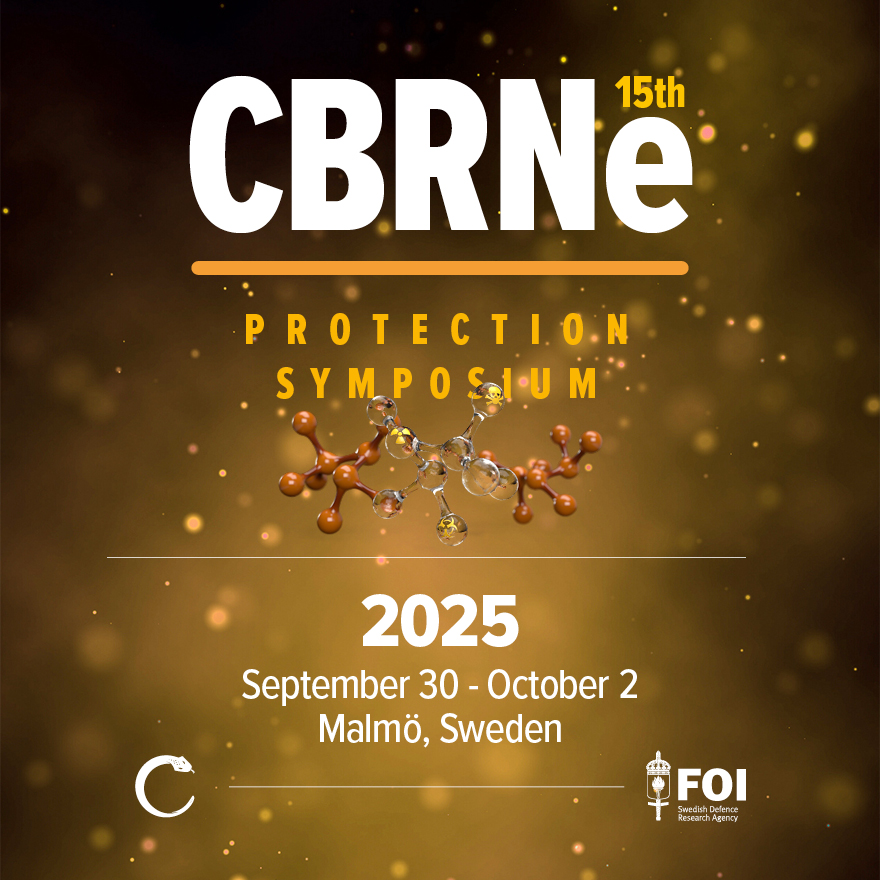By Dr. Jeff Brodeur
On December 23rd, 2025, a European mall is crowded with shoppers and young people enjoying the day. In the food court, an elderly woman suddenly coughs and struggles to breathe, prompting security to respond. They determine she is having a heart attack, but soon, others also begin to feel short of breath.
In a control room below the mall, the security manager observes a teenager in the gaming arcade repeatedly using an asthma inhaler as more guests start gasping for air and fleeing. An emergency evacuation is ordered, causing panic among the crowd. Speculation about a chemical attack spreads among the shoppers and is soon all over social media, causing panic while emergency services rush to the scene.
Before responders can identify the issue, local hospitals and clinics are overwhelmed with patients. An investigation later revealed that the health crisis was caused by sarin gas, a nerve agent. A few days post-incident, the situation stabilizes but leaves nine dead: two from sarin poisoning and others due to pre-existing conditions or injuries sustained in the chaotic evacuation.
This hypothetical example illustrates a typical chemical agent attack by a nation-state or terrorist group. The consequences are devastating, resulting in fatalities as well as many injured and traumatized, with the mall closed for days. With more information and training, and an effectively designed and directed emergency management plan, first responders may have been able to save lives and ensure that those at most risk were evacuated first, thereby reducing injuries.
What makes a city vulnerable to a chemical attack
Several factors make a city vulnerable to a chemical attack; these range from intelligence errors, poor proactive policing and security, weak physical security, under-equipped emergency services, and poor infrastructure, among others.
Any urban area can become a target for a potential chemical agent attack. The main objective of these attacks, whether from hostile nation-states or homegrown terrorists, is rarely to cause fatalities; rather, it is to incapacitate significant numbers of individuals, creating chaos and fear. This strategy seeks to draw attention to the ideologies promoted by the perpetrator. As a result, they typically target high-profile events that receive international media coverage, ensuring the event is broadcast worldwide in real time.
The most important objective of causing chaos and fear in an urban environment is to embarrass the government and undermine its credibility, thereby attempting to coerce it into acquiescing to the attackers’ demands.

HAZMAT sampling team collects evidence for presumptive analysis.
Soldiers perform hazardous-material sampling during Guardian Response 2022, a large-scale CBRN training event—ideal for the part on rapid on-scene identification.
Copyright/credit: Public Domain — U.S. Army / DVIDS (credit: Spc. Tommela Ware).
Chemical attack readiness
Different cities prepare for chemical attacks in various ways, but most large cities have an emergency plan to address this scenario. Having a plan in place does not necessarily equate to readiness. Being prepared for a chemical attack comes down to having a tested and exercised plan, the proper training and equipment, and emergency services that can implement their city’s chemical attack response plan with minimal errors and confidently pivot to deal with unforeseen aspects. It also includes having all the relevant support services in place and ready to respond in concert with emergency services.
In a real-world attack, emergency and law enforcement services will be the first on the scene within minutes of being notified. They cannot afford to waste time and must act immediately to minimize potential injury and fatalities.
The first step is to relocate the public from the area where the chemical agent is active to a secure location. Access to advanced presumptive analysis technology must be ensured to quickly identify the agent. Due to the urgency of the situation, transmitting samples to a laboratory for analysis is not feasible; thus, on-site analytical devices are essential to save lives and minimize casualties. Additionally, responders must have basic protective equipment ready in their vehicles to ensure an immediate and effective response.
Following the initial response, additional equipment and personal protective equipment (PPE) will be required. This requirement can often be a choke point in emergencies if the required supplementary equipment cannot be accessed on time. Procedures for transporting people and equipment to the site must be included in the emergency plan, but must also be flexible enough to adapt to unforeseen circumstances, such as excessive traffic or power outages. Mutual aid agreements with other towns, as well as state and federal resources, are a fundamental aspect of emergency service delivery, and these should be on standby to strengthen available personnel.
City hospitals are advised to have strategies in place to manage mass casualty incidents that may exceed their standard capacities. Comprehensive contingency plans should be formulated for all medical services, accompanied by regular training sessions and simulation exercises, to ensure the swift activation of emergency protocols. For instance, hospitals may need to temporarily suspend non-essential services or reallocate resources to prioritize emergency care.
Key factors impeding preparations
Cities lacking an emergency plan and the resources to respond and initiate cordons will experience greater casualties, thereby amplifying the attack’s impact and giving the attackers the desired publicity. For instance, without adequate training, first responders—particularly law enforcement—may instinctively concentrate on the attack and the event’s location when arriving at the scene. Securing the public by moving them out of danger is always the critical first step in a chemical incident. Unless another immediate threat exists, such as an active shooter, other investigations and remediation efforts can be postponed until people are safe.
The standard procedure in a chemical attack is to segment impacted areas into cold, warm, and hot zones. The hot zone is the danger area where the attack occurred and where people have been and will be harmed. It should be cordoned off so that no one can enter this sector, apart from response teams equipped with the appropriate protective gear.
The warm zone borders the hot zone and is where first responders gather to implement their tactical response and to have access to their rescue equipment. Emergency services will set up decontamination units and casualty processing points in this area. The cold zone encompasses everything outside the warm and hot zones, where civilians are safe from contamination. However, law enforcement must control the cold zone immediately surrounding the warm zone to allow for the free access and egress of emergency vehicles.
Creating the zones accurately is difficult if authorities on the scene are unaware of the agent’s identity. A non-persistent gas will soon dissipate, but persistent agents can linger, driven to new areas by a change in wind direction or adhering to material and equipment for days. For example, Sarin is a non-persistent agent with high volatility, which dissipates quickly unless used in high doses or enclosed areas. VX, a military grade nerve agent, is deadly, but more stable and therefore more persistent; it can remain on the ground for weeks. To effectively secure the location, first responders must be able to identify the agent rapidly and accurately.
Common mistakes and lessons not learned
The biggest failure cities and first responders can make in dealing with a chemical agent attack is to be unprepared. Contingency plans must be in place throughout the city and ready to be activated at a moment’s notice. Additionally, first responders cannot do their jobs efficiently if they don’t know what they are dealing with. If they don’t have the tools and skills to identify the threat, and if they believe that chemical agents are designed to kill, their response will be less effective.
This does not mean dangerous chemicals can be disregarded or treated simply as an annoyance. Prolonged or intensive exposure, even to non-lethal agents, can cause death. Presumptive analysis technology is, therefore, critical for first responders. Today, handheld devices can identify many chemicals and their concentration in seconds, indicating the risk level.
In some instances, law enforcement agencies may refrain from responding as they feel they lack adequate preparation. Their training typically emphasizes kinetic threats, which may lead them to defer to first responders. This challenge is further exacerbated by city leaders who maintain a perspective of “it will not happen here,” thereby ignoring or paying scant attention to the necessary training protocols and the acquisition of appropriate equipment.
The primary challenge in a chemical agent attack, as noted, is to separate the population from the hazard. In outdoor areas, the weather can be a helpful factor in dispersing the agent, but in cities, artificial obstructions, such as buildings, prevent the free flow of wind. Understanding this and general weather patterns can assist in setting up the hot zone.
Another common problem is the sustained work by responders over an extended period. If all resources rush to the location of the attack and if it lasts for hours or days, exhaustion will set in. Pacing the response after separating people from the threat is critical for events of longer duration, ensuring a consistent response from start to finish. Once the public is out of danger, standard emergency processes will deliver a consistent, informed response to minimize casualties and damage.

Marking the cold zone to keep civilian traffic clear of operations.
A “Cold Zone” sign beside decontamination tents during an operational readiness exercise at Eielson Air Force Base, illustrating basic hot/warm/cold-zone control for chemical incidents.
Copyright/credit: Public Domain — U.S. Air Force
Six steps to improve a city’s response to a chemical attack
The threat of a chemical attack on a major city may be limited, but the current global geopolitical risk environment is unstable, and terrorists, whether home-grown or backed by adversarial nation-states, could seize the opportunity to make a statement.
Six steps a city can implement to ensure it is ready to handle chemical attacks are:
- Sensors: Every city needs early-warning sensors to detect chemical attacks. However, since these cannot be deployed everywhere, a risk analysis must be conducted and regularly updated to identify the areas with the highest risk. Sensors can be permanent, such as those on the sides of buildings or near schools, or they can be mobile, deployed for special events, or even added to first responder vehicles. First responders must also have access to handheld analytical devices for rapid presumptive analysis to determine if a powder or liquid contains hazardous chemicals.
- Immediate action drills: Emergency services must practice their standardized tactical response procedures to the point where any reaction to a chemical attack becomes swift, effective, and second nature. Rehearsals empower them to know how to respond to various agents, where to establish cordons, and how to ensure their safety as well as that of the public.
- Messaging and communications: The facts of the attack and the agent used must be clearly communicated, along with the hot zones to avoid. Once the facts have been determined, the controlled release of information will limit panic among the public. A crucial component of messaging and communication is having a crisis communications plan in place. Communicating honestly, openly, and clearly to the media enables the media to convey information succinctly and unambiguously to citizens of the impacted area and the country at large, thereby avoiding a secondary crisis of rumors and disinformation.
- Mass casualty management: Emergency and medical services may be overwhelmed by the number of casualties. They must be prepared to implement preplanned processes to extend their resources and efficiently manage the inflow of patients.
- Resiliency: The goal of the city’s response must be resiliency, so that the entire town, its operational capabilities, and the daily functions of residents and businesses return to normal as soon as possible.
- Reach-back capability: America and the EU are fortunate to have vast resources and intellectual capital in the field of chemical agents. Contact with experts allows them to be called in to assist in monitoring the situation and provide informed advice.
Preparation and continuous improvement in these areas are fundamental to addressing the threats of chemical terrorism, protecting civilians’ safety and well-being, and ensuring that a city is ready for a chemical attack. Resilience does not imply that a city is immune to attacks; instead, it means it is prepared and can mitigate the danger, limit casualties, and quickly return to normal.
Dr. Jeffrey M. Brodeur has experience developing CBRN strategy, plans, and training programs at all echelons of the U.S. Department of Defense from a strategic, operational, and tactical perspective. He was formally trained at the U.S. Army Command and General Staff College and the U.S. Army War College, and his past performance includes senior battle staff at the Army Division (2-star), Army Service Component (3-star), and Geographic Combatant Command (4-star). Jeff’s last military duty assignment was the Assistant Commandant for the U.S. Army Chemical-Biological-Radiological-Nuclear schoolhouse and Regimental headquarters where he expertly managed the professional military education curriculum, training, and administrative management of an annual student load of approximately 8,000. Jeff holds a Doctorate from Colorado Technical University and is an internationally recognized CBRN expert, with experience as a conference keynote speaker and panel member in the USA, Canada, Iraq, Brazil, and Sweden.





